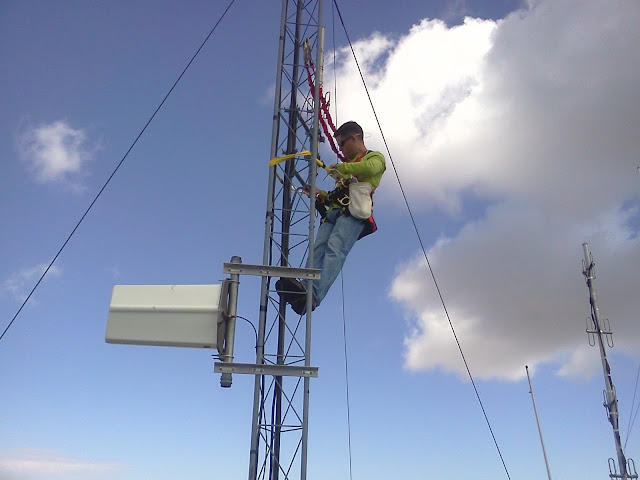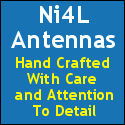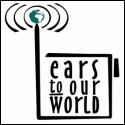Archive for the ‘dstar’ Category
 On the Road With D-STAR
On the Road With D-STAR
Part 1 of 2
I’m traveling this week with a DHAP and the Icom ID-51A dual-band handheld. This combination of hardware permits me to stay connected with my friends on the D-STAR network from wherever I happen to roam – no local digital repeater required. The DHAP is a custom-built enclosure and battery supply for a Raspberry Pi and DV Access Point – a DVAP.
If all this sounds like too much alphabet soup (it is!) let’s first break it down in pieces.
The DVAP is a small USB powered D-STAR transceiver that runs about 10mW of power on UHF. VHF is also available. It’s manufactured by Internet Labs. The concept here is that you plug the DVAP into a USB port on your Windows, Mac or Linux computer, running the proper software and connected to the Internet, and it looks a lot like a D-STAR repeater to your radio — albeit a micro-repeater with only about 100 yards of coverage.
With this arrangement, a user can connect to other repeaters and reflectors on the network. While it’s an effective solution, it’s not elegant or efficient to keep a desktop or laptop computer running all the time just to maintain that connection.
Enter the Raspberry Pi, a single board computer that’s smaller than a pack of cigarettes, costs $35, supports networking, and runs Linux. It didn’t take long for users to see the advantages of this arrangement over the desktop PC and the rapid migration was underway.
You can put all this together for the price of the DVAP and another $50-100 for a Raspberry Pi, memory, associated cables, power brick, and all that jazz. It will work perfectly well setting on your desk or workbench like that, but if you want to take it outside with you, an enclosure to house and organize it all is a really good idea.
Which gets us to the DHAP. Manufactured by Hardened Power Systems, this contraption is a robust enclosure for the DVAP and the Pi that conveniently brings all of the on-board connections out to the front and back panels. NiMH batteries run the show for several hours between charges while a front panel display shows the battery level.
It’s not waterproof, and I suppose you could break it if you tried. But it is a hardened, machined case that’s slightly smaller than a football. Once it’s configured and charged, you just pick it up and carry it with you wherever you go.
Of course, it requires a network connection that can be provided from a hardwired Ethernet cable or via a Wi-Fi network. That Wi-Fi link means it can be easily tethered to your cell phone, which is how I use it on the road, when I bring it home, it automatically connects to my home Wi-Fi.
It’s the ultimate in convenience and portability for the D-STAR enthusiast though it’s not cheap. $300 [US] for the unit with a Raspberry Pi, a little less if you’re bringing your own Pi. And that doesn’t include the DVAP…
More about how I use all this on the road, and a few tips about the DHAP in the next post.
Filed under: Ham Radio Tagged: dhap, dstar, dvap, hr, icom, id51a
 New D-Star radio from Icom. Icom ID-5100
New D-Star radio from Icom. Icom ID-5100
I maybe the only one that still gets excited about all new rig announcements especially Icom D-STAR. There is a new radio that was announced on their website in Japan. I did a little tools translation to pull up everything I could about the new Icom ID-5100.
Osaka Hirano, President: Tsutomu Fukui headquarters) Icom Inc., will be released (20W type), ID-5100D the (50W type) for amateur radio transceiver ID-5100. Of course, digital <D-STAR>, ID-5100 is a vehicle-mounted transceiver that provides an advantageous evolve in operation in the analog mode of conventional.
Here is my full post if you would like to read more about it.
 Unboxing the Icom IC-F4161DT NXDN Radio
Unboxing the Icom IC-F4161DT NXDN Radio
Unboxing the Icom IC-F4161DT
As my wife would say, I am at it again with radios. I just picked up the Icom IC-F4161DT NXDN Radio. If you do not know much about NXDN I would recommend that you check out these few pages:
http://en.wikipedia.org/wiki/NXDN
http://www.nxdn-forum.com/
The reason I jumped aboard is that my club NI4CE has taking the leap with our 10 country coverage of repeaters we have started the process of updated them to NXDN. http://www.ni4ce.org/nxdn/
Here is a blurb, but you could read more at their site: Earlier this year, the West Central Florida Group, Inc. made a strategic decision to replace the D-Star digital repeater at Riverview with an industry standard NXDN repeater from ICOM. In addition, the new ICOM FR6000 UHF repeaters now in service at Verna (442.950 MHz) and Holiday (443.450 MHz) also support MIXED mode 25 KHz analog voice and 6.25 KHz NXDN digital communications on demand.
I decided that it was time for me to think about this challenge since I always like to be on the latest technologies and also I love radios ☺ I think we all know that by now if you have read my articles about Ham Radio.
Full post: http://nicktoday.com/unboxing-icom-ic-f4161dt-nxdn-radio/
 Repeater work on Sandia Crest
Repeater work on Sandia Crest
I had the opportunity of a lifetime to traverse through the nation’s most RF dense mountaintop towersite, and possibly reduce my chances of having children by a large amount…in any case, today’s work was bucket loads of fun.
| Towers lining the crest. [Wikimedia user Skoch3, Photo] |
The work at the site was simple — some regular maintenance to the W5MPZ D-STAR repeater and gateway.
So, I got up early and headed off to Ed’s (KA8JMW) place to pick up the caravan to the peak. We packed the truck with some server rack shelves and tools, and headed to pick up Brian (N5ZGT), then Chris (NB5T).
And then, the 10,768 ft (3,255m) summit.
The road was blocked by the Forest Service since the park was closed due to fire danger. Thanks to some prior planning, we had no trouble getting past.
And not two turns in to the curvy mountain road, we meet our first deer, head on. Thanks to Ed’s quick foot on the break (maybe he was practicing for QLF?) the deer zipped across the road, perhaps only with a bruised tail.
We were warned that with the lack of humans, nature tends to take over a bit
The one thing I though of going up the road is, what if you had this road all to yourself (like we did then) with a nice, fast rally car?
I think deer would have a problem with that.
Anyway, we got to the top, and met the first obstacle:
Chris dispatched the lock on the well-signed gate and we were in. At that point, we had entered the danger zone; the steel forest. With at least 26 FM stations, almost half being over 20 kilowatts, 33 TV stations, more than half over 100 kW, and an uncountable number of microwave dishes, log periodics, yagis, verticals, radomes, funny looking phased arrays and dipoles supported on dozens of massive towers, I swear I could hear KOB in my teeth.
After driving through the entire site, we arrived at our final destination: the Sandia Nat’l Lab’s personal radio playhouse.
The guys began working on equipment, while I snapped photos and gazed in awe of the city of Albuquerque all within my field of view.
 |
| Chris, Ed, and Brian “working.” |
Brian took the job of tightening the D-STAR antenna, which he did adamantly, without falling, thanks to his fancy harness. It’s funny how dinky that antenna seems, but being over 3,000 ft ( 914m) above the rest of the world, it can see almost 100 radio miles (150km). With my 40w mobile radio, it comes in full signal in Socorro, NM, 75 miles (50km) away.
The team was successful of getting things done, cleaning up the shelves of an obtrusive monitor, keyboard and mouse (by going SSH only) and installing a NetIO internet-controlled AC power killswitch.
 |
| Before… |
 |
| After. Notice the new black box on the top right. That controls power for the whole thing via the web. |
The work was complete right on the dong of noon, and we had ribs for lunch. YUM! After that, Chris’s wife treated us to some homemade ice cream at his place, and we toured his shack, nestled on the edge of a HOA-restricted subdivision. That doesn’t stop him from loving ham radio!
Next on the list is to move this stuff to its permanent home on server racks. Sadly, I won’t be here, with only two weeks left in my VLA internship. I don’t wanna leave! 🙁
I would like to thank Ed James KA8JMW, Chris Aas NB5T and last but not least, Brian Mileshosky N5ZGT for taking me on this mighty heighty outing. Perfect timing for knocking another thing off my New Mexico to-do list.
The only part I forgot on that list was to bring a spectrum analyzer up there. It would have probably blown up in my hands.
 |
| Me, Ed, Chris and Brian on the edge of the crest. |
 Icom DSTAR – 50 States in 50 Days Project
Icom DSTAR – 50 States in 50 Days Project
Let me start with saying that I love having goals and challenging myself in different ways… I came up with a challenge that I didn’t think would be too hard to meet but would be fun and stretch my operating time a little more than I have been on the air in a while. I love DStar and the fact that I live in an Antenna Restricted area makes me try to be more creative than ever on keeping my radio skills high as well as having some fun doing it. 50 States WAS is always one of the first challenges people go after when getting on HF so I thought why not try to do 50 States on DStar and to make it interesting come up with a catchy way to say it so there grew: 50 States in 50 Days. Sounds catchy right? I thought so…
Honestly, it should be a very easy goal to attain from a technology standpoint I mean get on a Reflector and you could pick off 5-6 states on a major reflector in on setting. Also, just linking to 50 repeaters should only take you what a day or two to do if you just rush through it…. Here is what do you haven’t added… Full time job, wife, two kids with full schedules, 4 dogs, 15 other hobbies and the fact that I’m pretty tired at the end of my day!! I have thought about doing this project for a while but I jumped in with both feet tonight with some free time I had tonight….
With that said… Let’s get started!!
March 30 –
- Linked to KI4WXS in the Charlotte area to talk to my friend John – KJ4KJM who I got into the hobby and we had a quick QSO on his way home from work.
- Linked to AA1HD in Vernon Connecticut because I was on a roll at this point and reconnected to one of my oldest (no age but long term) friends in the hobby Fran (W1FJM)
- Linked to AC7O in UT and I got a change to meet Bob – KF7LQS who just got a 91ad and was learning his way around DStar from Logan, UT. Really nice guy and someone you should connect with if your online
- Linked to K3PDR in Philadelphia, PA as my wife happened to be in that area and I LOVE THE FOOD there. After a few calls… K3DS Dennis came back to me while he was putting some finishing touches on his Shack.
Since we have some thunderstorms coming through and tornado warnings in effect I decided to shut down and take the rest of the night off. I’ll be back to my quest tomorrow hopefully…
Full story: Worked all States DSTAR – 50 states in 50 days | NickToday Blog
 LHS Episode #085: David Rowe on Codec2
LHS Episode #085: David Rowe on Codec2
 Please join us for a special episode of Linux in the Ham Shack. In Episode #085, the hosts interview a vibrant and brilliant engineer from Adelaide, South Australia, named David Rowe. He is the mastermind behind the codec2 open voice codec among several other worthy and equally brilliant open source projects. He dabbles in VoIP, hardware, Open Source advocacy, engineering, voice compression, amateur radio and other endeavors far too numerous to name. David Rowe is definitely one of the more special people occupying our planet and our interview with him is nothing short of amazing. Please tune in and have your mind blown. We look forward to the overspray.
Please join us for a special episode of Linux in the Ham Shack. In Episode #085, the hosts interview a vibrant and brilliant engineer from Adelaide, South Australia, named David Rowe. He is the mastermind behind the codec2 open voice codec among several other worthy and equally brilliant open source projects. He dabbles in VoIP, hardware, Open Source advocacy, engineering, voice compression, amateur radio and other endeavors far too numerous to name. David Rowe is definitely one of the more special people occupying our planet and our interview with him is nothing short of amazing. Please tune in and have your mind blown. We look forward to the overspray.
73 de The LHS Guys
 AmateurLogic.TV 33: One Jam Packed Show
AmateurLogic.TV 33: One Jam Packed Show
)
George visits the Twit.tv studios and interviews Randy Hall, K7AGE. Tommy visits the Huntsville Hamfest. Jim builds an Audio Isolation Interface. Peter shows us the DATV QSO Party.




















